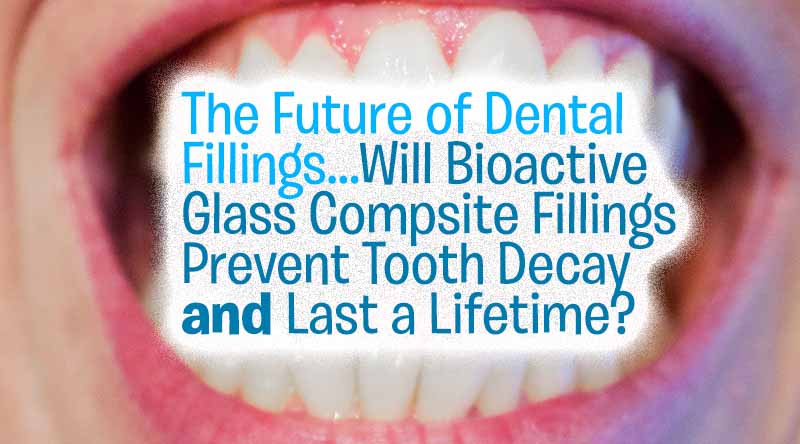Within the past few years, tooth fillings have undergone new research and a new type of filling has emerged that uses bioactive glass.
An article in Dental Products Report explained that future composite fillings might be made of glass. The advantage would be that bioactive glass could hinder bacteria from attacking composite tooth fillings. Not only that, it may also help replace minerals lost during tooth decay.
The Research Study on Tooth Fillings
Engineers at Oregon State University conducted a study that showed more than 122 million composite tooth restorations occur in the United States each year. The average longevity of a posterior dental composite is no more than six years. Teeth get a lot of wear when you consider people average 600 chews a year using their teeth.
Bioactive glass is a particular type of glass that is in a crushed state, and for decades certain types of bone healing have used it due to its ability to interact biologically with the body. The researchers began using the glass in composite tooth fillings and discovered that bacteria avoids it and gravitates toward fillings that don’t incorporate the glass. For this reason, it may help slow down the formation of cavities.
Bioactive glass looks like a powder and is made from silicon oxide, calcium oxide and phosphorous oxide. It has been called “bioactive” because unlike other biomedical materials that remain inert in the body, the body can interact with bioactive glass. It can be used in place of inert glass fillers currently contained in composite tooth fillings.
The recent research study used extracted human molars to produce simulated tooth restoration in laboratory experiments.
The Truth About Tooth Decay
Most people don’t realize it, but tooth decay continues, even after teeth are filled and the decay often begins where the filling and tooth interface. Research showed that bacteria didn’t penetrate as deeply into the interface with fillings containing bioactive glass. For that reason, researchers believe the glass fillings will slow down decay, and they may even help replace some minerals that are being lost. Bioactive glass may be the answer for longer lasting fillings.
The good news is that once the research is clinically confirmed, it will be easy to incorporate bioactive glass into composite fillings.
Get in Touch with Dr. Baker About Your Dental Care
New breakthroughs in technology are exciting, and Dr. Baker likes to stay on the cutting edge of technology and keep abreast of what’s happening in the dental field. Find out how he can help you with your dental care.







Recent Comments